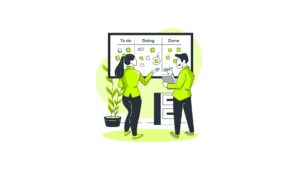Accept Cookies & Privacy Policy?
We use cookies to ensure that we give you the best experience on our website. If you continue to use this site we will assume that you accept and understand our Privacy Policy, and our Terms of Service.
Implementing SAP systems can be a game-changer for businesses. It can streamline processes, improve productivity, and provide deeper insights into your operations. However, SAP implementations are known for being complex, requiring careful planning, integration, and testing. Without effective Quality Control (QC) and Quality Engineering (QE), even the best-planned SAP projects can hit roadblocks, leading to delays, cost overruns, and inefficiencies in implementations.
At Thought Frameworks, we take the stress out of SAP implementations by ensuring that QC and QE are central to the process. Let’s explore how we enhance SAP implementations and deliver real world results.
Think of an SAP implementation as constructing a building. The blueprint might be flawless, but without rigorous checks during construction and ongoing monitoring, flaws can creep in. In SAP projects, these flaws can include:
Quality Control (QC) ensures that the final product (the SAP system) meets the business requirements through structured testing phases. Quality Engineering (QE), on the other hand, goes beyond just testing. It proactively prevents issues by embedding quality processes into every phase of the implementation lifecycle (with reviews in every step of implementation )
QC and QE identify potential issues before they become costly problems. Whether it’s missing data in a financial report or an integration failure between modules, catching these early saves time, money, and frustration.
With QE practices embedded in the early stages, issues are resolved as they arise, leading to smoother go-lives. QC practices ensure every element of the system functions as expected, reducing rework and downtime.
When SAP systems work seamlessly from day one, users are more likely to adopt the system, ensuring the company achieves its intended ROI. QC ensures that the user experience is considered during testing, while QE makes it part of the overall design.
At Thought Frameworks, we integrate QC and QE at every stage of SAP implementation to maximize success. Here’s how:
We develop a tailored test plan specific to your SAP modules and integrations, ensuring every functionality is covered. Whether it’s unit testing, integration testing, or UAT, we design tests to cover potential failure points.
Through automated regression testing, we ensure that any updates or changes to the SAP system do not disrupt existing functionalities. Our automation experts set up scripts that can run thousands of tests in minutes, saving you valuable time and ensuring accuracy.
We work hand-in-hand with your teams to design systems that are not just functional but scalable and adaptable. This means your SAP system will grow with your business, without the need for constant re-engineering.
Not all features are equally critical. We focus our testing efforts on areas that pose the highest risk to your business operations. This allows us to deliver maximum impact with the least disruption.
In the pharmaceutical industry struggling with a massive SAP implementation is a bumpy ride. The projects are delayed, with mounting costs due to integration issues between the financial and logistics modules. Here’s how we mitigate this common issue when our team at Thought Frameworks is brought on board to lead the QC and QE effort.
The result: Saving potential delays and leading in time SAP implementation solutions .
|
Stage
|
Role of QC & QE
|
|---|---|
|
Planning
|
QE ensures quality processes are embedded.
|
|
Design
|
QE collaborates on creating scalable, testable designs.
|
|
Development
|
QC runs unit and integration tests.
|
|
Testing
|
QC executes automated and manual tests.
|
|
Go-Live
|
QE ensures smooth transitions; QC verifies functionality.
|
|
Continuous Improvement
|
QE ensures adaptability and continuous quality.
|
With a deep understanding of the complexities of SAP systems, we bring years of experience in applying QC and QE best practices to make your implementation a success. Our focus on automation, scalability, and collaboration with your teams ensures that we not only find and fix problems but prevent them from happening in the first place.
Reach out to Thought Frameworks today to learn how we can enhance your SAP implementation journey and secure a smoother path to success.
Takeaway: Quality is the backbone of every successful SAP implementation. With Thought Frameworks’ QC and QE expertise, your SAP project won’t just go live, it will thrive!

So picture this: You’re the air traffic controller of a chaotic airport where the planes (developers) don’t always listen, the passengers (stakeholders) want to change destinations mid-flight, and the weather (unforeseen blockers) is always unpredictable.

Imagine a world where testing is no longer a bottleneck. No more endless cycles of manual effort, no more missed defects due to human fatigue, and no more panic at the eleventh hour before a major ERP rollout.

Imagine a world where testing is no longer a bottleneck. No more endless cycles of manual effort, no more missed defects due to human fatigue, and no more panic at the eleventh hour before a major ERP rollout.

Let’s talk about GenAI and testing in 2025—the wild west of technology where machines are not just smart, but scary smart. GenAI (that’s Generative AI for the uninitiated) is running the show everywhere. It’s writing poetry, designing ads, debugging code, and probably plotting to take over my job as I write this blog.

Ah, 2024—you’ve been a year, haven’t you? For us at Thought Frameworks, this year wasn’t just about running the usual QA/QE playbook. Nope, we went full throttle into the future—tinkering, testing, and transforming everything from ERP systems to the ever-evolving world of SAP, GenAI, and security testing.

So, you’re deep in the ERP trenches and trying to figure out the best approach between NetSuite and Oracle EBS. You’re certainly not alone! We can help break down how these two ERP giants stack up when it comes to ensuring systems run like clockwork but without the overload.
Accept Cookies & Privacy Policy?
We use cookies to ensure that we give you the best experience on our website. If you continue to use this site we will assume that you accept and understand our Privacy Policy, and our Terms of Service.
| Cookie | Duration | Description |
|---|---|---|
| cookielawinfo-checkbox-analytics | 11 months | This cookie is set by GDPR Cookie Consent plugin. The cookie is used to store the user consent for the cookies in the category "Analytics". |
| cookielawinfo-checkbox-functional | 11 months | The cookie is set by GDPR cookie consent to record the user consent for the cookies in the category "Functional". |
| cookielawinfo-checkbox-necessary | 11 months | This cookie is set by GDPR Cookie Consent plugin. The cookies is used to store the user consent for the cookies in the category "Necessary". |
| cookielawinfo-checkbox-others | 11 months | This cookie is set by GDPR Cookie Consent plugin. The cookie is used to store the user consent for the cookies in the category "Other. |
| cookielawinfo-checkbox-performance | 11 months | This cookie is set by GDPR Cookie Consent plugin. The cookie is used to store the user consent for the cookies in the category "Performance". |
| viewed_cookie_policy | 11 months | The cookie is set by the GDPR Cookie Consent plugin and is used to store whether or not user has consented to the use of cookies. It does not store any personal data. |
Ready for a Quality Software?
Let’s Dig Deep Into Your Thought!